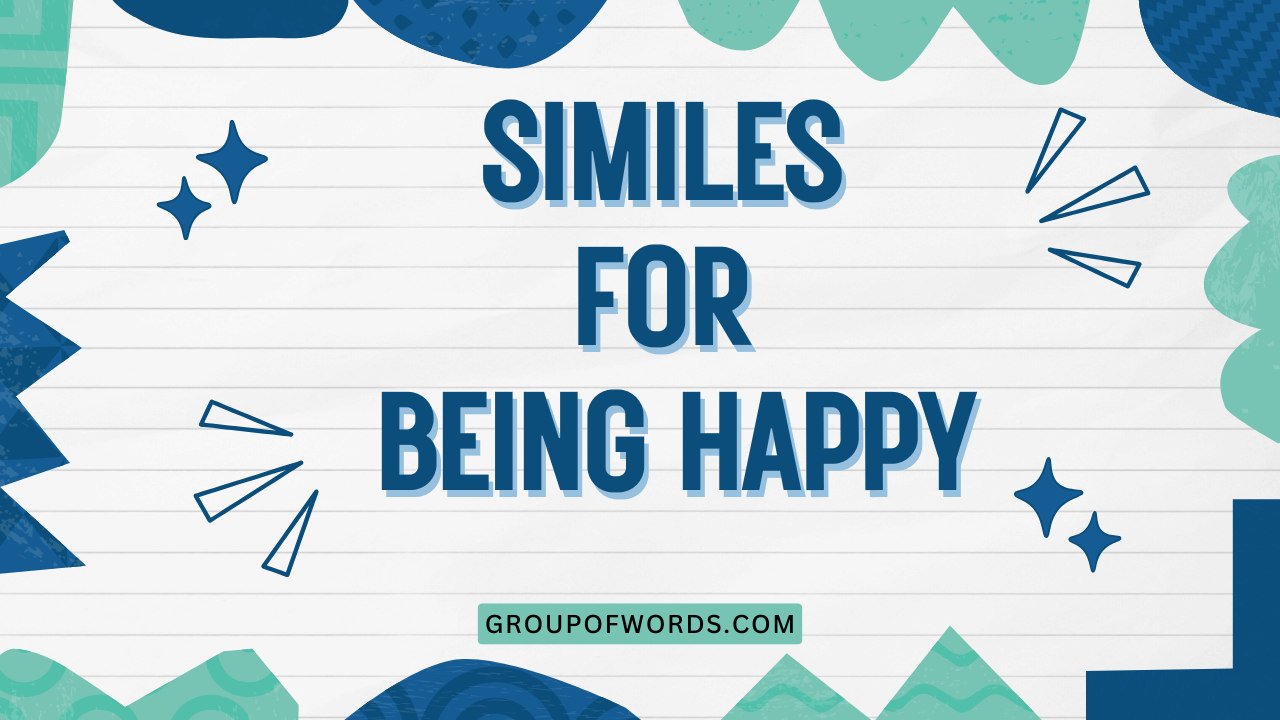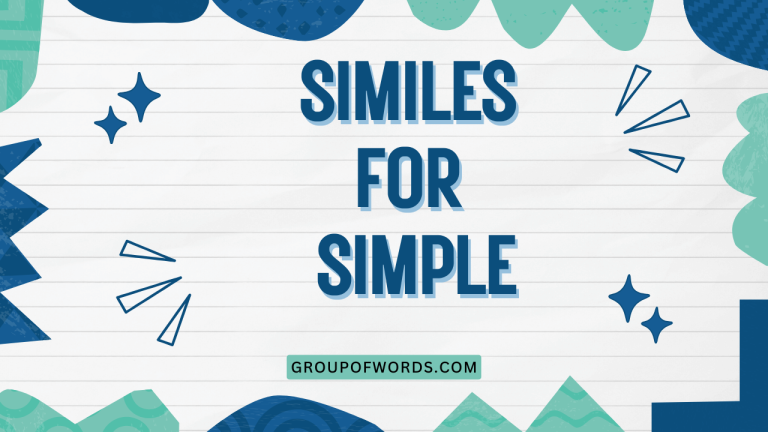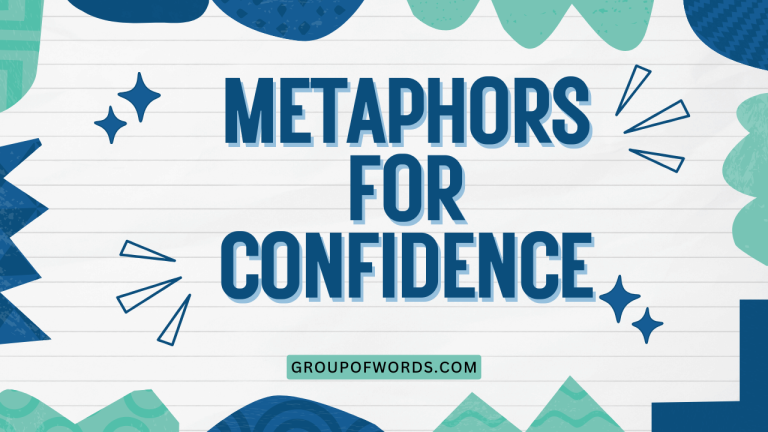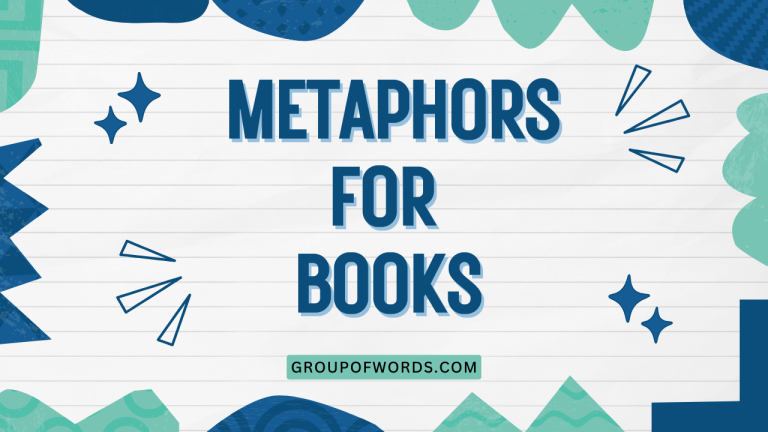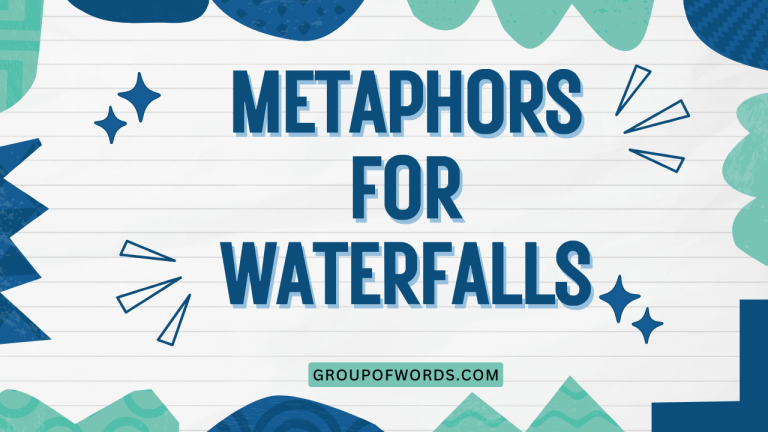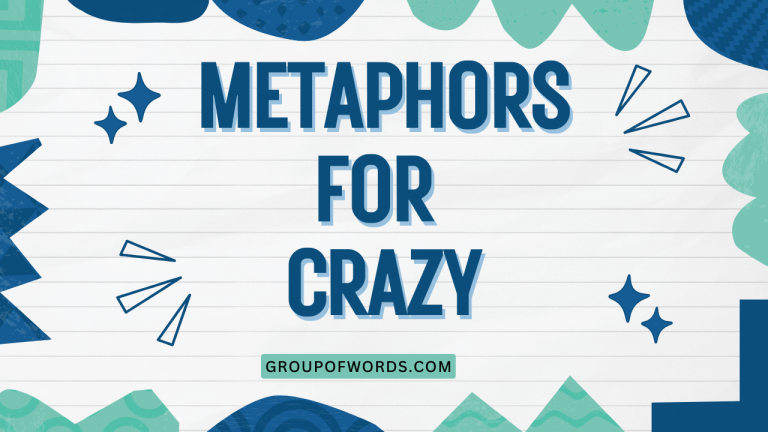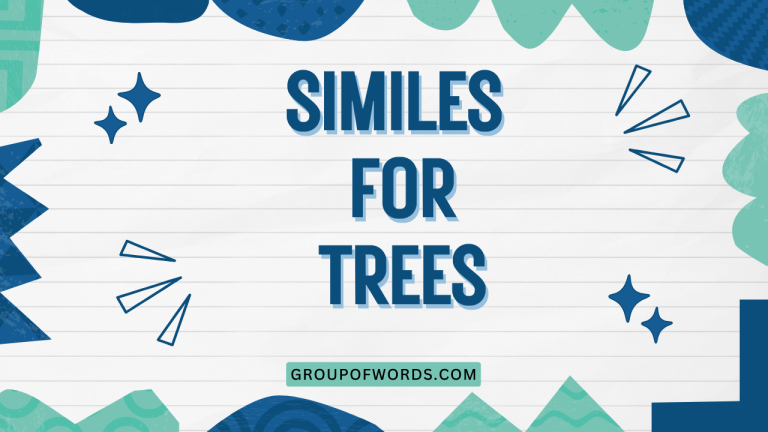Similes for Happiness: A Comprehensive Guide
Understanding how to express happiness effectively is crucial for clear and engaging communication. Similes, in particular, offer a vivid and imaginative way to convey feelings of joy.
This article explores a wide range of similes for happiness, providing definitions, examples, and practical exercises to help you master their usage. Whether you’re a student, writer, or simply looking to enrich your vocabulary, this guide will equip you with the tools to express happiness in a more colorful and impactful way.
Table of Contents
- Introduction
- Definition of Simile
- Structural Breakdown of Happiness Similes
- Types of Similes for Happiness
- Examples of Similes for Happiness
- Usage Rules for Similes
- Common Mistakes When Using Similes
- Practice Exercises
- Advanced Topics: Nuances and Variations
- Frequently Asked Questions
- Conclusion
Definition of Simile
A simile is a figure of speech that directly compares two different things using the words “like” or “as.” Similes are used to make descriptions more vivid and engaging by drawing parallels between the subject and something familiar to the audience. The primary function of a simile is to enhance understanding and create a stronger image in the reader’s or listener’s mind.
In the context of expressing happiness, similes allow you to go beyond simple statements and provide a richer, more nuanced depiction of joyful emotions.
Similes are classified as figures of speech belonging to the broader category of figurative language. They function as descriptive tools, adding color and depth to writing and speech.
The context in which a simile is used significantly impacts its effectiveness. For example, a simile appropriate for describing a child’s happiness might not be suitable for expressing the happiness of an adult achieving a significant professional goal.
Structural Breakdown of Happiness Similes
The basic structure of a simile consists of three key elements: the subject (the thing being described), the linking word (“like” or “as”), and the object of comparison (the thing to which the subject is being compared). Understanding this structure is essential for creating and interpreting similes effectively.
The subject is the person, place, thing, or idea whose happiness is being described. The linking word, “like” or “as,” establishes the comparison.
The object of comparison is something that shares a characteristic with the subject, helping to illustrate the nature of their happiness. For example, in the simile “She was as happy as a clam,” “she” is the subject, “as” is the linking word, and “a clam” is the object of comparison.
The implied shared characteristic is contentment or a sense of well-being.
The effectiveness of a simile depends on the clarity and relevance of the comparison. A well-chosen object of comparison will resonate with the audience and create a vivid mental image.
Conversely, a poorly chosen object of comparison can be confusing or ineffective.
Types of Similes for Happiness
Similes for happiness can be categorized based on the specific aspects of happiness they highlight. Here are some common types:
General Happiness
These similes describe a general state of joy or contentment without specifying a particular cause or context.
Childlike Happiness
These similes evoke the pure, unadulterated joy often associated with childhood.
Romantic Happiness
These similes express the happiness that comes from love and romantic relationships.
Triumphant Happiness
These similes convey the joy of achieving a goal or overcoming a challenge.
Peaceful Happiness
These similes describe a quiet, serene sense of happiness and contentment.
Examples of Similes for Happiness
Here are several tables filled with examples of similes describing different aspects of happiness. Each table focuses on a specific type of happiness to provide varied and insightful examples.
General Happiness
The following table provides examples of similes that describe general happiness. These similes can be used in various contexts to express overall feelings of joy and contentment.
| Simile | Explanation |
|---|---|
| He was as happy as a lark. | Larks are known for their cheerful songs, suggesting a lighthearted joy. |
| She felt as happy as a clam at high tide. | Clams are safe and content at high tide, indicating a sense of security and well-being. |
| They were as happy as pigs in mud. | Pigs enjoy playing in mud, representing carefree pleasure. |
| I am as happy as can be. | A simple and direct expression of extreme happiness. |
| He grinned like a Cheshire cat. | The Cheshire cat’s wide, enigmatic smile symbolizes great pleasure. |
| She was as happy as the day is long. | Emphasizes the continuous and abundant nature of her happiness. |
| They were as happy as if they’d won the lottery. | Compares their happiness to the excitement of a major win. |
| He felt as light as a feather, as happy as could be. | Combines lightness and happiness to express a buoyant mood. |
| She was as happy as a kid in a candy store. | Captures the excitement and joy of a child surrounded by treats. |
| He was as pleased as punch. | An idiom expressing great satisfaction and happiness. |
| She was as bright as a button, so happy to be there. | Uses ‘bright’ to suggest both intelligence and joy. |
| They were as content as cows in a pasture. | Evokes a sense of peaceful satisfaction. |
| He felt as if he was walking on air, as happy as could be. | Suggests a feeling of lightness and elation. |
| She was as merry as a cricket. | Crickets are associated with cheerful sounds, implying a lively joy. |
| They were as jovial as Santa Claus. | Compares their happiness to the legendary figure of joy. |
| He was as thrilled as a child on Christmas morning. | Captures the specific excitement of a holiday celebration. |
| She was as cheerful as a spring day. | Associates her happiness with the vibrancy of spring. |
| They felt as blessed as angels. | Indicates a sense of profound, spiritual happiness. |
| He was as delighted as a king in his palace. | Compares his joy to the luxurious contentment of royalty. |
| She was as exuberant as a puppy. | Expresses boundless energy and joy. |
| They were as gratified as a philanthropist. | Implies a deep satisfaction from helping others. |
| He was as gleeful as a winner. | Directly compares his happiness to the joy of winning. |
| She was as tickled as a baby being played with. | Evokes a sense of pure, innocent amusement. |
| They were as ecstatic as fans at a concert. | Captures the intense excitement of a live performance. |
Childlike Happiness
The following table provides examples of similes that describe childlike happiness. These similes often involve simple pleasures and innocent joy.
| Simile | Explanation |
|---|---|
| He was as happy as a piglet in sunshine. | Presents the image of carefree joy and simple pleasures. |
| She giggled like a child on a swing. | Captures the innocent delight of childhood activities. |
| They were as carefree as birds in the sky. | Suggests freedom and a lack of worries. |
| He was as thrilled as a kid with a new toy. | Expresses the excitement of receiving something new and enjoyable. |
| She skipped like a little girl on the playground. | Evokes the image of youthful energy and joy. |
| They were as delighted as children at a circus. | Compares their happiness to the wonder and excitement of a circus. |
| He laughed like a child discovering a secret. | Captures the innocent curiosity and joy of discovery. |
| She was as giddy as a schoolgirl. | Expresses lighthearted excitement and silliness. |
| They were as playful as puppies in a park. | Suggests boundless energy and joyful interaction. |
| He was as amazed as a child seeing snow for the first time. | Captures the wonder and awe of new experiences. |
| She was as excited as a kid on Christmas Eve. | Emphasizes the anticipation and excitement of a special occasion. |
| They were as innocent as lambs, full of joy. | Suggests purity and unadulterated happiness. |
| He beamed like a child who just learned to ride a bike. | Captures the pride and accomplishment of a new skill. |
| She clapped her hands together like an excited toddler. | Evokes the image of innocent delight and enthusiasm. |
| They were as bubbly as kids playing in a sprinkler. | Suggests effervescent joy and carefree fun. |
| He was as amazed as a child watching a magic show. | Captures the wonder and enchantment of the performance. |
| She was as enthralled as a child listening to a fairy tale. | Expresses the captivating power of storytelling. |
| They were as delighted as kids at a birthday party. | Compares their happiness to the excitement and fun of a celebration. |
| He was as thrilled as a child opening presents. | Captures the joy and anticipation of receiving gifts. |
| She was as exuberant as a child running through a field of flowers. | Suggests boundless energy and joyful freedom. |
| They were as amused as children watching cartoons. | Compares their happiness to the simple pleasure of entertainment. |
| He was as gleeful as a child getting ice cream. | Captures the simple joy of a sweet treat. |
| She was as content as a child cuddling a teddy bear. | Expresses a sense of comfort and security. |
| They were as lighthearted as children playing tag. | Suggests carefree fun and joyful interaction. |
Romantic Happiness
This table provides examples of similes that describe romantic happiness, often associated with love and relationships.
| Simile | Explanation |
|---|---|
| She loved him as deeply as the ocean is vast. | Emphasizes the immense depth of her love. |
| He felt as complete as two pieces of a puzzle fitting together. | Suggests a sense of wholeness and perfect match. |
| Their love was as warm as a summer’s day. | Compares their love to the comforting warmth of summer. |
| She looked at him as lovingly as a mother gazes at her child. | Captures the tenderness and care in her gaze. |
| He cherished her as much as a sailor treasures his compass. | Suggests that she guides and directs his life. |
| Their happiness was as radiant as the sun. | Compares their joy to the bright and shining sun. |
| She felt as alive as if she’d been reborn in his arms. | Expresses a sense of renewal and vitality. |
| He was as devoted as a knight to his queen. | Suggests unwavering loyalty and admiration. |
| Their love was as sweet as honey. | Compares their love to the delicious taste of honey. |
| She felt as secure as if she were wrapped in his embrace. | Expresses a sense of safety and comfort. |
| He adored her as much as the stars adore the moon. | Suggests a deep and constant admiration. |
| Their connection was as strong as an unbreakable bond. | Emphasizes the resilience and permanence of their relationship. |
| She laughed as freely as if all her worries had vanished. | Captures the carefree joy of being in love. |
| He felt as blessed as if he had been given a priceless gift. | Expresses gratitude and appreciation for her presence in his life. |
| Their love was as gentle as a summer breeze. | Compares their love to the soft and soothing touch of a breeze. |
| She was as happy as if she’d found her missing piece. | Suggests a sense of completion and belonging. |
| He looked at her as if she were the most beautiful woman in the world. | Captures the intensity and admiration in his gaze. |
| Their love was as vibrant as a blooming garden. | Compares their love to the colorful and lively flowers in a garden. |
| She felt as light as a feather whenever he was near. | Expresses a sense of buoyancy and joy in his presence. |
| He was as captivated as if he were under a spell. | Suggests a deep and irresistible attraction. |
| Their love was as pure as a mountain spring. | Compares their love to the clear and pristine water of a spring. |
| She felt as if she could conquer the world with him by her side. | Expresses a sense of empowerment and confidence. |
| He was as content as if he had everything he could ever need. | Suggests a sense of fulfillment and satisfaction. |
| Their love was as enduring as the ancient mountains. | Compares their love to the timeless strength of the mountains. |
Triumphant Happiness
This table provides examples of similes describing triumphant happiness, often associated with achievement and success.
| Simile | Explanation |
|---|---|
| He felt as victorious as a general after a battle. | Compares his feeling to the triumph of a military leader. |
| She was as proud as a peacock after winning the award. | Captures the feeling of great pride and accomplishment. |
| They celebrated as jubilantly as athletes winning the championship. | Compares their celebration to the excitement of a sports victory. |
| He felt as accomplished as a climber reaching the summit. | Suggests the satisfaction of achieving a challenging goal. |
| She was as elated as an entrepreneur launching a successful business. | Expresses the excitement of achieving professional success. |
| They were as triumphant as explorers discovering new lands. | Compares their success to the thrill of discovery. |
| He felt as if he had conquered the world after finishing the project. | Suggests a sense of overwhelming achievement. |
| She was as overjoyed as an artist selling her first painting. | Expresses the satisfaction of creative success. |
| They were as ecstatic as graduates receiving their diplomas. | Compares their happiness to the joy of academic achievement. |
| He felt as powerful as a king after making the deal. | Suggests a sense of control and influence. |
| She was as thrilled as a scientist making a groundbreaking discovery. | Expresses the excitement of intellectual achievement. |
| They were as fulfilled as volunteers helping those in need. | Compares their happiness to the satisfaction of altruism. |
| He beamed as brightly as a newly lit torch. | Captures the radiance of his success. |
| She walked as tall as a skyscraper after her promotion. | Expresses her pride and confidence. |
| They cheered as loudly as a stadium full of winning fans. | Compares their celebration to the energy of a crowd. |
| He felt as unstoppable as a freight train after his victory. | Suggests his momentum and invincibility. |
| She danced as freely as a bird released from its cage. | Expresses her liberation and joy. |
| They glowed as brightly as fireworks on the Fourth of July. | Compares their happiness to the spectacle of celebration. |
| He felt as invincible as a superhero after his triumph. | Suggests his strength and confidence. |
| She smiled as widely as the horizon after her achievement. | Expresses the vastness of her joy. |
| They were as jubilant as sailors returning home after a long voyage. | Compares their happiness to the relief and joy of homecoming. |
| He felt as if he had wings after achieving his dream. | Suggests his freedom and elation. |
| She was as radiant as a star after her performance. | Expresses her brilliance and success. |
| They celebrated as enthusiastically as children at a carnival. | Compares their joy to the excitement of a festive event. |
Peaceful Happiness
The following table provides examples of similes that describe peaceful happiness, often associated with serenity and contentment.
| Simile | Explanation |
|---|---|
| She was as serene as a still lake at dawn. | Suggests a quiet, undisturbed sense of peace. |
| He felt as content as a cat basking in the sun. | Compares his contentment to the relaxed comfort of a cat. |
| They were as tranquil as monks in meditation. | Suggests a deep state of inner peace. |
| She was as calm as a gentle breeze on a summer evening. | Compares her calmness to the soothing touch of a breeze. |
| He felt as relaxed as if he were floating on a cloud. | Suggests a sense of weightlessness and ease. |
| They were as peaceful as a forest after a snowfall. | Compares their peace to the quiet beauty of a snowy forest. |
| She was as still as a statue, lost in contentment. | Suggests a deep, unwavering sense of peace. |
| He felt as if he were wrapped in a blanket of serenity. | Expresses a sense of comfort and security. |
| They were as untroubled as birds soaring in the sky. | Suggests freedom from worries and concerns. |
| She was as quiet as a whisper, filled with joy. | Compares her quietness to the gentle sound of a whisper. |
| He felt as grateful as if he had been given a precious gift. | Expresses a sense of appreciation for the simple joys of life. |
| They were as grounded as ancient trees, full of peace. | Suggests stability and a deep connection to the earth. |
| She smiled as softly as the moonlight on the water. | Captures the gentle glow of her happiness. |
| He sat as still as a stone, lost in peaceful thought. | Expresses his deep contemplation and serenity. |
| They strolled as leisurely as if time had stopped. | Suggests a relaxed and unhurried pace of life. |
| She felt as light as a feather, free from all burdens. | Expresses her sense of liberation and ease. |
| He was as content as a scholar surrounded by books. | Compares his contentment to the satisfaction of intellectual pursuits. |
| They were as harmonious as instruments playing in tune. | Suggests a sense of balance and agreement. |
| She felt as nourished as if she had drunk from a fountain of peace. | Expresses her sense of inner fulfillment. |
| He was as present as if he were fully immersed in the moment. | Suggests his mindfulness and awareness. |
| They were as connected as roots intertwined beneath the earth. | Compares their connection to the strength of nature. |
| She felt as inspired as if she had been touched by a divine hand. | Expresses her sense of awe and wonder. |
| He was as clear as a mountain stream, free from all confusion. | Suggests his clarity of mind and purpose. |
| They were as balanced as tightrope walkers, perfectly poised. | Compares their balance to the skill of a performer. |
Usage Rules for Similes
When using similes, it’s essential to follow certain rules to ensure clarity and effectiveness:
- Use “like” or “as”: Ensure that the simile includes one of these linking words to establish the comparison.
- Compare dissimilar things: Similes are most effective when comparing things that are different but share a common characteristic.
- Be clear and concise: The comparison should be easy to understand and not overly complicated.
- Consider your audience: Choose comparisons that will resonate with your readers or listeners.
- Avoid clichés: Try to avoid overused similes that have lost their impact.
Exceptions and Special Cases: While most similes follow the basic structure, there are exceptions. Sometimes, the linking word may be implied rather than explicitly stated. Additionally, similes can be combined with other figures of speech to create more complex and nuanced descriptions.
Common Mistakes When Using Similes
One of the most common mistakes is using clichés, which are overused and lack originality. For example, saying “as happy as a clam” is a common simile, but it may not be as impactful as a more creative comparison.
Another mistake is creating comparisons that don’t make sense or are confusing. The object of comparison should be something that the audience can easily relate to and understand.
Using metaphors instead of similes is also a frequent error. Remember that similes use “like” or “as” to make a comparison, while metaphors directly state that one thing *is* another.
| Incorrect | Correct | Explanation |
|---|---|---|
| He is happiness. | He is as happy as a lark. | The first sentence is a metaphor; the second is a simile. |
| She was happy clam. | She was as happy as a clam at high tide. | The first sentence is missing the linking word (“as”). |
| They were happy like winning. | They were as happy as if they’d won the lottery. | The first sentence lacks clarity and a proper comparison. |
Practice Exercises
Test your understanding of similes with these practice exercises. Fill in the blanks to complete the similes, or rewrite the sentences using similes.
Exercise 1: Complete the Similes
Complete the following sentences with appropriate objects of comparison to create effective similes.
| Question | Answer |
|---|---|
| 1. He was as happy as a _______. | 1. He was as happy as a lark. |
| 2. She felt as light as a _______, as happy as could be. | 2. She felt as light as a feather, as happy as could be. |
| 3. They were as playful as _______ in the park. | 3. They were as playful as puppies in the park. |
| 4. Their love was as sweet as _______. | 4. Their love was as sweet as honey. |
| 5. She was as serene as a _______ at dawn. | 5. She was as serene as a still lake at dawn. |
| 6. He was as thrilled as a child on _______. | 6. He was as thrilled as a child on Christmas morning. |
| 7. She was as excited as a kid on _______. | 7. She was as excited as a kid on Christmas Eve. |
| 8. They celebrated as jubilantly as athletes winning _______. | 8. They celebrated as jubilantly as athletes winning the championship. |
| 9. She smiled as softly as _______ on the water. | 9. She smiled as softly as the moonlight on the water. |
| 10. He felt as content as a cat basking in _______. | 10. He felt as content as a cat basking in the sun. |
Exercise 2: Rewrite Using Similes
Rewrite the following sentences using similes to make them more vivid and descriptive.
| Question | Answer |
|---|---|
| 1. He was very happy. | 1. He was as happy as a lark in the morning. |
| 2. She felt light and joyful. | 2. She felt as light as a feather, as joyful as a songbird. |
| 3. They were carefree and playful. | 3. They were as carefree as birds in the sky, as playful as puppies in a park. |
| 4. Their love was very strong. | 4. Their love was as strong as an unbreakable bond. |
| 5. She was extremely peaceful. | 5. She was as peaceful as a still lake at dawn. |
| 6. He felt a sense of triumph. | 6. He felt as victorious as a general after a battle. |
| 7. She was very proud of her achievement. | 7. She was as proud as a peacock after winning the award. |
| 8. They celebrated their victory with great enthusiasm. | 8. They celebrated as jubilantly as athletes winning the championship. |
| 9. She was quiet and content. | 9. She was as quiet as a whisper, as content as a cat basking in the sun. |
| 10. He felt grateful for his blessings. | 10. He felt as grateful as if he had been given a precious gift. |
Advanced Topics: Nuances and Variations
For advanced learners, understanding the nuances and variations of similes can enhance their writing and communication skills. This includes exploring how similes can be combined with other figures of speech, such as metaphors and personification, to create more complex and layered descriptions.
For instance, you might use a simile to introduce a comparison and then develop it further with a metaphor.
Another advanced topic is the use of similes in different cultural contexts. The effectiveness of a simile can depend on the audience’s familiarity with the object of comparison.
A simile that resonates with one cultural group may not be as effective with another. Therefore, it’s essential to consider cultural sensitivities when using similes.
Finally, exploring the historical evolution of similes can provide valuable insights into their usage. Some similes have been used for centuries and have become deeply ingrained in the language, while others are more recent and reflect contemporary culture.
Frequently Asked Questions
- What is the difference between a simile and a metaphor?
A simile compares two things using “like” or “as,” while a metaphor directly states that one thing *is* another. For example, “He is as brave as a lion” is a simile, while “He is a lion” is a metaphor. Similes make an explicit comparison, whereas metaphors imply a resemblance.
- How can I avoid using clichés in my similes?
To avoid clichés, try to think of original and unexpected comparisons. Consider the specific qualities you want to emphasize and look for objects or ideas that share those qualities in a unique way. Brainstorming and experimenting with different comparisons can help you create more impactful similes.
- Can a simile be too long or complicated?
Yes, a simile can be too long or complicated. The best similes are clear, concise, and easy to understand. If a simile is too convoluted, it can lose its impact and confuse the audience. Aim for simplicity and clarity in your comparisons.
- How do I choose the right object of comparison for a simile?
Choose an object of comparison that is relevant to the subject and that shares a common characteristic. Consider your audience and choose comparisons that will resonate with them. The object of comparison should enhance understanding and create a vivid mental image.
- Are similes only used in writing, or can they be used in speech as well?
Similes can be used in both writing and speech. They are a versatile figure of speech that can add color and depth to communication in any context. In speech, similes can make your language more engaging and memorable.
- How can I practice using similes effectively?
Practice by rewriting sentences using similes, completing simile exercises, and experimenting with different comparisons in your writing and speech. Pay attention to how similes are used by other writers and speakers, and analyze their effectiveness.
- What are some common categories of similes besides happiness?
Similes can describe a wide range of emotions, qualities, and experiences. Common categories include similes for sadness, anger, fear, love, beauty, strength, and intelligence. The possibilities are endless, and the best similes are those that are tailored to the specific context and subject.
- How do cultural contexts affect the use of similes?
Cultural contexts significantly influence the effectiveness of similes. A simile that resonates with one cultural group may not be as effective with another due to differences in cultural knowledge, values, and experiences. Consider your audience’s cultural background when choosing similes to ensure they are relevant and meaningful.
Conclusion
Mastering similes for happiness allows you to express joy and contentment in a more vivid and engaging way. By understanding the structure, types, and usage rules of similes, you can enhance your writing and communication skills.
Remember to practice regularly, avoid clichés, and consider your audience when crafting similes. With these tips, you’ll be well-equipped to express happiness in a colorful and impactful manner.
Continue to explore and experiment with different similes to expand your vocabulary and deepen your understanding of figurative language. The more you practice, the more natural and effective your use of similes will become.
Embrace the power of similes to bring your descriptions to life and connect with your audience on a deeper level. Remember that the key to mastering any grammar topic is consistent practice and a willingness to learn from your mistakes.
Happy writing!
